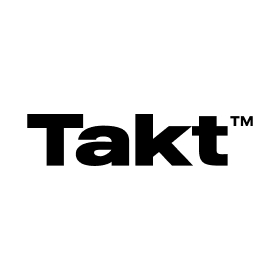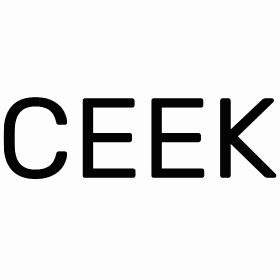
Agency Under Pressure? Here’s How to Manage Your Team’s Workload
As an agency leader, managing your team’s workload is likely to have been a cause of stress at one point or another.
It’s a tale as old as time: the project pipeline looks a bit thin, so you start pitching like your life depended on it. But then, you end up securing more work than you anticipated – and only after you’ve said “yes” to the projects do you realize that you’ve massively overcommitted.
Striking the balance and keeping the team’s workload consistent can sometimes seem like an impossible task. Indeed, it might even feel like this cycle simply comes with the territory in agency life. But it shouldn’t just be accepted as an unpleasant inevitability. Massively inconsistent workloads can lead to negative consequences for your team – and spell big problems for your business.
A recent employee survey by the American Psychological Association found that a heavy or unbalanced workload is a cause of stress for half of the respondents. Of the people who said that work stress was a problem for them, seven out of ten revealed that they intend to change jobs within the year.
If you don’t pay attention to employee workloads and try to minimize crunch periods (or, indeed, periods where people are sitting around, tapping their toes), you risk losing good people.
The solution? Actively prioritizing workload management. This way, not only are your projects completed successfully, but your employees stay motivated, productive – and willing to stay with your company in the long run.
Why is workload management a challenge for agencies?
For agencies, the biggest challenge to workload management is that operations are unpredictable. Across the entire agency, everyone’s workload varies considerably, depending on the contracts you get and the project schedules of your long-term clients. At times, the team’s tasks seem to overflow. Other times, you’re looking at an empty project pipeline.
This irregular workflow leads to difficulty forecasting workload in the long run. In fact, many agencies struggle to accurately forecast their workload more than 1-2 months ahead, which makes resource planning a lot harder.
Does that mean workload management is pointless for agencies?
Not at all. The fact that the demands are unstable is exactly what makes agency workload management important for agencies. With sustainable agency resource management and well-laid-out workload planning, you can boost your profits and projects in the short and long run, while improving employee performance and work-life balance.
Essential steps to manage your team’s workload
Despite the challenges, it is possible to implement an effective workload management process within an agency. Here are seven key steps to managing workloads and improving team productivity.
Plan for realistic deadlines
One of the key reasons for a heavy workload is a build up of tasks that have not been completed on time. Unrealistic deadlines are often to blame for this.
While some managers like to turn up the urgency by setting short deadlines, this practice almost always leads to one of four possible outcomes:
- Your staff’s attention may be spread across multiple tasks, diminishing the quality of their outputs
- They might work late to complete all their work on time, at the expense of their health and personal life
- They might miss the deadline, compromising the project schedule
- You might have to reassign the work to another employee last minute, with variable results
As an agency leader, setting achievable deadlines makes it easier for your employees to implement good time management, prioritize their work appropriately, and get things done without having to work over their contracted hours.
Stay on top of everyone’s availability
There’s nothing worse than assigning a task to someone, only to realize they’re on vacation! Agencies need up-to-date information on their employees’ availability so that they can manage workloads effectively based on those available working hours.
Knowledge of your team’s availability also reduces the likelihood of team members being overbooked. It helps establish a more transparent line of communication between you and your employees, which in turn makes them feel more able to raise concerns about workload before it becomes a problem.
Track team member time & billable utilization rates
The workload management process doesn’t stop at assigning tasks: monitoring your team’s time worked and billable utilization is important too. This process gives you an overview of your team’s workload versus capacity and analyzes how much team capacity is left for upcoming tasks and projects.
Knowing how your team is utilized is your baseline for creating an optimal workload distribution, which will save you the financial cost of having employees sitting idle, and help reduce employee burnout and stress.
If we’re honest, the team might not be wild about the idea of adopting a time tracking app if that isn’t something they are used to. But time tracking tools are the easiest way to gather this vital information, and you can use this data to create positive changes that your employees will notice.
Are certain team members constantly overbooked, for instance, while others seem bored? Are your specialized employees fully utilized? Is there a lot of pressure on certain skill sets? Perhaps you need to upskill an existing team member, or even hire someone new altogether.
Tracking time accurately can help you get this information, and empowers you to make far more refined hiring and scheduling decisions. The result? Everyone on your team will feel the benefits.
Introduce daily stand-ups
Daily standups or short catch-up meetings can help keep an eye on the team’s workload. It gives you an update on who is assigned to what task, when they will finish, and any delays or challenges they’re facing.
You can also use the opportunity to reassign tasks if needed and ensure a fair spread of administrative tasks or more manageable tasks.
If you’re worried extra meetings will leave the team feeling overwhelmed, try doing virtual, asynchronous stand-ups instead using Slack or a similar tool.
Prioritize work
Another critical aspect of workload management is deciding how to prioritize tasks – both within an individual team member’s workload and across the entire project.
With proper project prioritization, you categorize specific tasks according to their urgency and importance. This enables you to delegate tasks to team members based on their abilities, focus on completing the highest priority tasks, and prune unimportant tasks from the to-do list to maximize productivity.
Encourage the team to give feedback
Establishing a time for evaluating employee workload helps managers figure out each team member’s strengths and areas for improvement. It also creates an opportunity for individual and team performance assessments, reflecting on how the work was done and what could have gone better.
While many people who manage projects think of the function of these meetings as top-down feedback, being asked for feedback can encourage your team members to analyze their workload and come up with solutions that can improve productivity on future projects.
Bring a strategic capacity planning tool into play
Ultimately, many of the suggestions we’ve made – commit to reasonable deadlines, and prioritize projects – become more feasible when you’re able to plan ahead with a reasonable degree of accuracy. The trouble is, project work contains so many moving parts, it can turn planning into an intricate, obfusticated artform.
You need a way to see your agency’s real capacity, quickly model new scenarios, ascertain resource availability in a flash, and get accurate estimates of what realistic project timelines could look like – projected into the future. A crystal ball, maybe?
Well, capacity planning software is probably the closest thing to a crystal ball for your agency. Some platforms, like Runn, for instance, allow you to model tentative projects and what-if scenarios in seconds, taking into account a variety of variables.
Armed with this knowledge, you’re able to make smarter decisions and commit to timelines that keep the workflow steady. It’s a true level-up for your agency.
Bottom line on agency workload management
Cracking workload management is a vital part of building an agency that operates steadily and sustainably in the long term. But, ultimately, it’s no big secret: the single biggest thing you can do to achieve a consistent, sustainable workload is to plan. Plan as far forward as you can, and as accurately as you can.
There’s no reason why this should be excessively manual, or especially time-consuming. It’s about finding the right tools to help you. Find one that works for you, and you’ll end up wondering what you ever did without it.

























